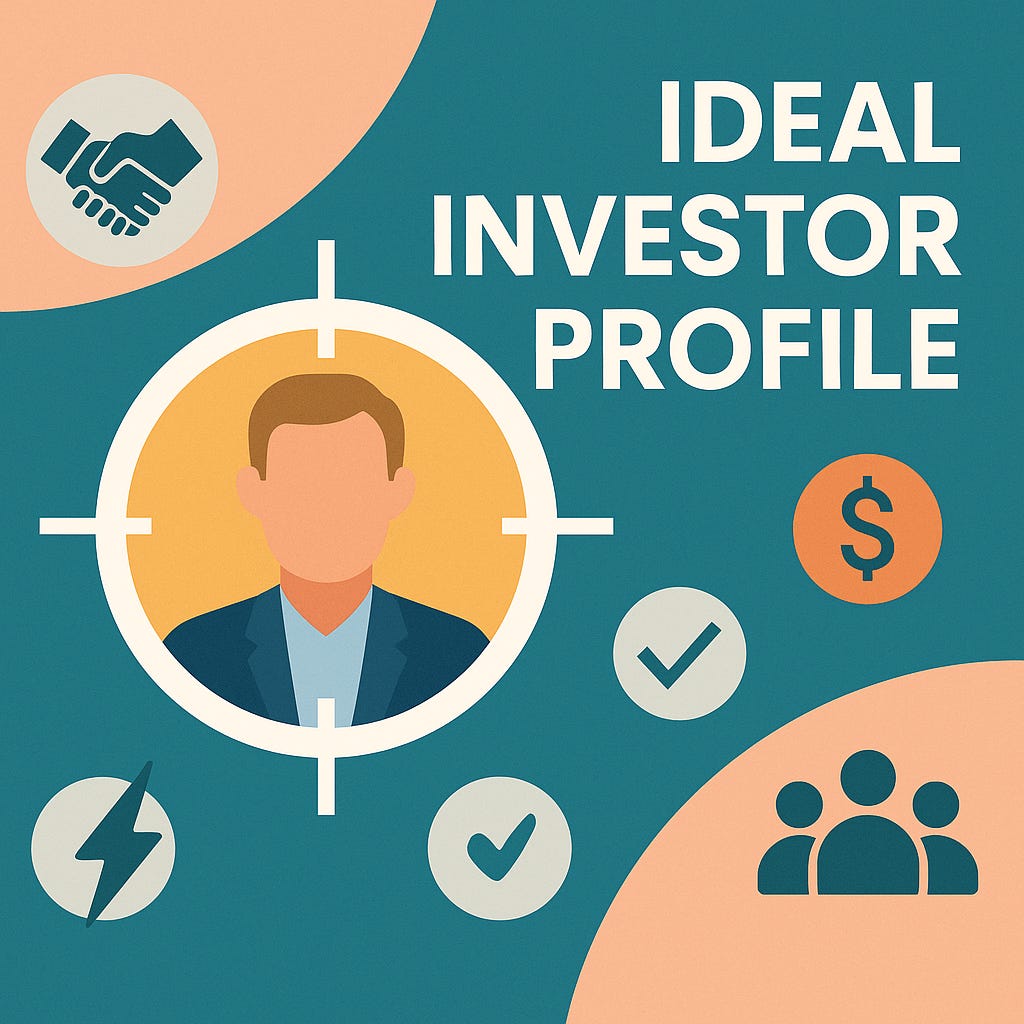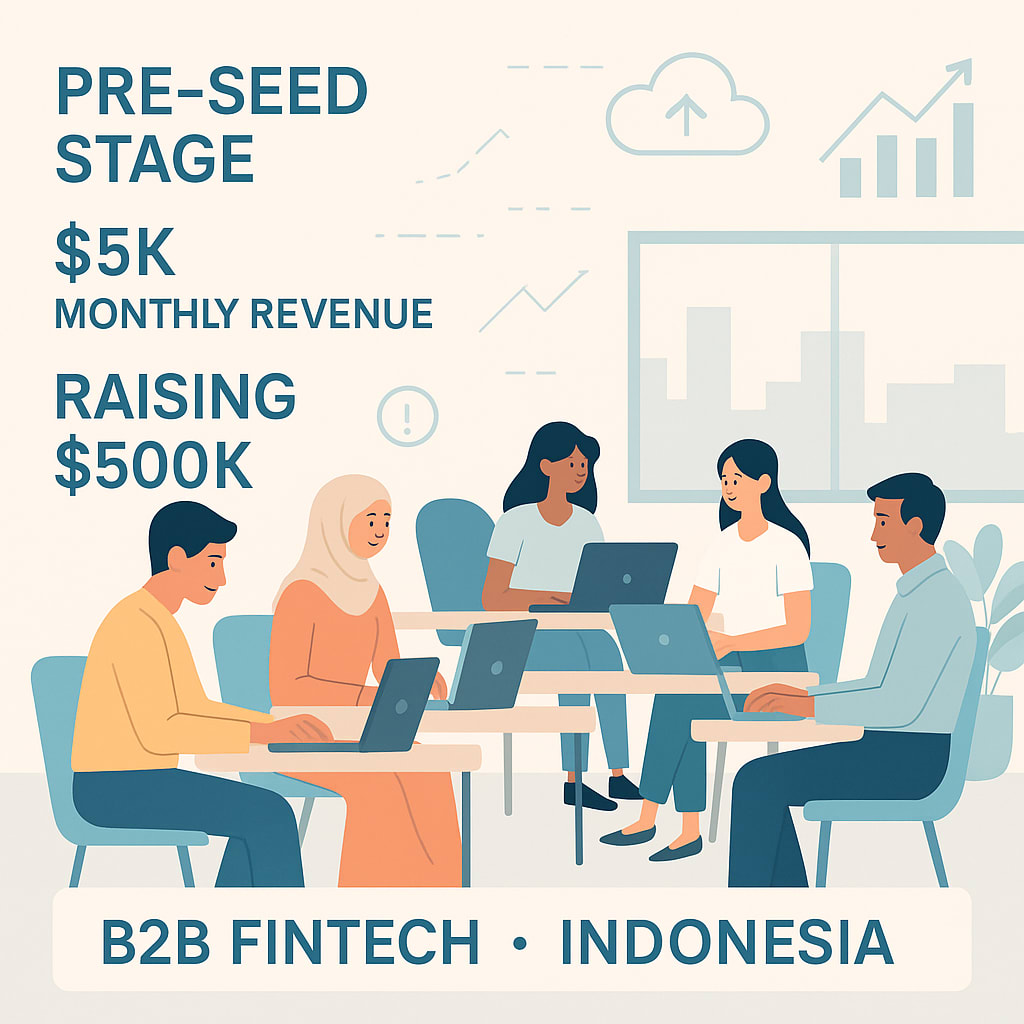Warning, this article is heavy on bullet points :•)
In the startup world we talk a lot about Ideal Customer Profiles (ICPs). ICPs are the persona, or description, of the ideal customer for your business. An ICP is:
Easier to convert
More likely to pay
Less likely to leave
More likely to refer other ICPs
Finding your ICP is an important step in reaching Product Market Fit, which should be every startup’s goal. Selling to people who are more likely to like and buy your product seems obvious when you think about it.
But most startups don’t think the same way about fundraising. Fundraising is also a form of sales. Rather than selling your product you are selling equity. You should treat finding investors to buy your equity just like you would treat finding customers for your product.
Enter the concept of Ideal Investor Profile (IIP).
Similar to the ICP, an IIP is:
Easier to convert
More likely to pay
Less likely to leave (or ask to leave)
More likely to refer other IIPs
IIPs are also more likely to:
Refer customers to you
Refer potential employees to you
Make valuable introductions for you
IIPs are less likely to:
Negotiate hard on the terms of investment
Ask for their money back after a short period of time
Cause problems when a new round is raised by trying to change terms to benefit them
So, how do you think about creating an IIP for your startup? There are a few top-level variables to start with, including:
What stage of maturity is your business at?
What country is your main operation (sales and entity) in?
What industry vertical are you in?
How soon do you need the money?
Let’s create a case study. Imagine you are an early stage (pre-Seed) startup like this:
Most of the startups I work with are at a stage similar to this. And almost all of them are going after the wrong IIPs for their fundraising: VCs.
Why is a VC the wrong IIP for this startup?
VCs typically have a minimum check size of $500k-$1 million, so if you are raising $500k then the VC almost definitely cannot participate (VCs rarely take the whole round; they usually want you to fin other investors for 20-50% of the total round size). And you cannot simply raise your valuation if you don’t have the numbers to support it.
Do you need the money soon? VCs typically take at least six months from first meeting to cash in the bank. In the meantime you won’t receive any cash from any investor in the round! Can you grow for 6-12 months without capital?
So what is the right IIP for this startup?
It’s almost always Angels. Angels can move fast and get you the money you need to grow now. Startups in the Accelerating Asia program have received money in as little as 24 hours from meeting an investor!
Angels also don’t need to be lumped into a round organized by a lead investor. You can close them yourself with SAFEs through a process I call drip financing.
You can certainly meet some VCs and begin a relationship for future investment, but the chances that they invest now are slim. Also take note of how many startups they meet versus how many they invest in.
VCs meet a LOT of startups. One well-known VC in my market meets over 2,000 startups per year and invests in five. I don’t like those odds, do you?
Angels on the other hand, typically meet with a few dozen at most and invest in a few. Yes, the checks are smaller, but they’re faster. Raise what you need to scale your business to stability and/or a level where you can raise the larger institutional rounds. Most likely, VCs are not the best use of your pitching time today.
But let’s say you’re at the next stage, and finding a VC to lead your round is the right path. What should you consider when creating a VC IIP?
Does the VC invest at your stage of maturity?
Does the VC invest in your vertical?
Does the VC invest in your geography?
Has the VC invested in a competitor?
Is the VC currently deploying capital? VCs go through cycles of fundraising and fund deployment.
How long does it usually take to go through their process from term sheet through due diligence to cash in your bank account? (hint: ask founders from their portfolio not just them).
Treat your fundraising journey just like you would your sales journey. You should have a hypothesis backed by research (How much should you raise? At what valuation? What check size? etc.). This will help you understand which IIP you should target.
Use a crm just like you would for managing your product sales pipeline. Have weekly sales meetings around fundraising. Set goals for how many investor meetings per week and how much you plan to raise by when. It’s selling. You’re just selling a different product. It can be toothpaste, software or equity, but the underlying process is the same.
On a final note, be careful who you let onto your cap table. Investors who are shareholders will get a vote on certain important things and you don’t want shitty people on your cap table who can mess things up. Do some background checking. If they’ve invested in other startups reach out to those founders, etc. Your investors may be with you for 10 years! It’s important to work with people who will have a positive effect on your business, not a negative. For more on founder/investor misalignment read this.
Spending the time to build out an IIP and implement a disciplined sales strategy for your fundraising will increase your likelihood of raising your round, generate faster closures and will ensure your founder/investor alignment is optimized.





Great post! ICPs are such a critical part of the growth strategy.